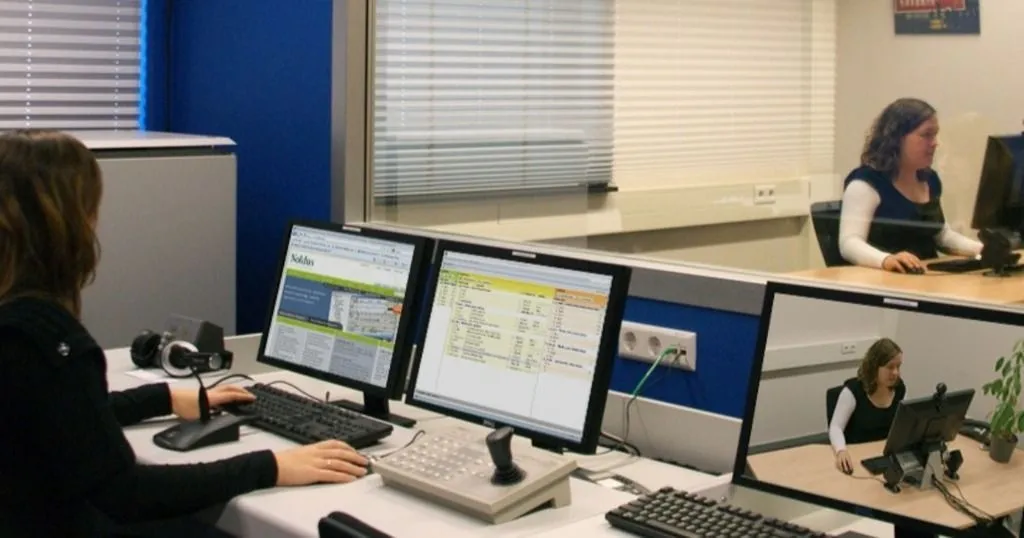Exploring the early development of referential gestural communication
Understanding the importance of pointing gestures can provide valuable insights into children's developmental progress and support their overall growth and learning.
Posted by
Published on
Mon 16 Sep. 2024
Topics
| Child | Child Development | Developmental Psychology | Infants | Parent-child Interaction | Social Communication | The Observer XT | Coding Behavior |

Imagine a sunny afternoon at the park, where children are playing happily. Amidst the laughter, an infant spots a colourful kite soaring high in the sky. Excitedly, she tugs at her father's sleeve and points upwards, her face lighting up with awe. This simple act of pointing does more than just direct her father’s gaze; it connects them in a shared moment of joy and communicates her fascination with the vibrant kite.
In child development, the pointing gesture is a key milestone that shows the child’s ability to share attention and interests and to communicate specific needs or information. We are talking about referential communication.
Socioemotional communication and referential communication
Socioemotional communication is the way we express and understand emotions and internal states and create social connections when we interact with others. It's not about the words we use but about our gaze direction and focus of attention, facial expressions, vocalizations and body language.
Referential communication is the way we share specific information or facts with others to make sure they understand what we are talking about. It involves being clear and precise, so the other person knows exactly what we mean. Referential communication, including pointing, is considered a triadic type of communication because it involves a triangulation of attention between the child, the interaction partner, and a shared focus of interest (e.g. a toy). Differently, socioemotional communication typically characterizes dyadic face-to-face interactions, which are especially prominent during the first months of life.
Pointing is one of the first forms of conscious communication
Children use pointing gestures to communicate their desires, preferences, and intentions to others by indicating objects or events. This requires an important realization in children: their perspective may not be the same as that of someone else. This ability is called the 'theory of mind'. It is part of the cognitive development and pointing is the very beginning of it.
In addition to being aware of different perspectives, the child must also be able to put itself in the other person's shoes. The child realizes that when they point, someone else will respond because that person understands their gesture. This pointing gesture communicates “I see something, and I want you to see it too!”.

How do infants communicate with caregivers and strangers?
The research team of Salvadori focused on pointing gestures. Understanding the importance of pointing gestures can provide valuable insights into children's developmental progress and support their overall growth and learning.
The team aimed to investigate if and how early socioemotional communication skills can predict how well a child will be able to point and use gestures later in life. The team also investigated whether a child’s natural personality traits affect this process. They used a longitudinal mixed-method approach that integrated naturalistic observations, experimental tasks in the lab, and parental reports.
The final sample of this study consisted of 51 children. They were observed at 4 and 8 months during 2-minute home-based interactions and later at 12 and 15 months during structured lab-based observations.
On-site observations
During the home-based interactions, the father, mother or (female) experimenter sat across from the infants, engaging in face-to-face interactions without toys. This ensured for comparability of communication behaviors at the two different ages.
Parents were instructed to interact with their infant as they would typically do in their everyday life. Experimenters were instructed to be visually attentive and expressively positive with the infant, in line with the infant’s emotional state. The interactions were coded for socioemotional communication behaviors, using The Observer XT.
Observing infants in a stationary lab
During the lab sessions at 12 and 15 months, the infants took part in activities where they were encouraged to point at objects behind the person conducting the experiment. The infant and the experimenter interacted when a stimulus (e.g. a spinning spiral creating an optical illusion effect) suddenly appeared from the curtain behind the experimenter, out of her sight.
The experimenter would respond to the infant pointing at a stimulus by acknowledging the object in line with its emotional valence. For example, for pleasant stimuli (i.e. spinning spiral), the response would be, "Yes, I see it too, it's beautiful," and for unpleasant stimuli (e.g. spider toy), the response would be, "Yes, I see it too, brrr it's scary."
The pointing gestures were microanalytically coded along with other nonverbal communication behaviors (facial expressions, vocalizations, and gaze directions). The interactions were recorded by two cameras and systematically coded using the video analysis software The Observer XT, which was also used to calculate interrater reliability.
FREE TRIAL: Try The Observer XT yourself!
Request a free trial and see for yourself how easy behavioral research can be!
- Work faster
- Reduce costs
- Get better data
The predictive value of early infant socioemotional communication
To examine the predictive value of early infant socioemotional communication (such as smiles, vocalizations, and gaze) on pointing production at 12 and 15 months, the team employed a multilevel Poisson regression analysis. The infant socioemotional communication variables measured at 4 and 8 months were included as predictors in the analysis, as well as temperamental factors like surgency and negative affectivity.
The effects of early socioemotional communication on pointing were tested separately for interactions with the mother, father, and a stranger (the female experimenter).
Children high in surgency typically exhibit traits such as high levels of energy, positive emotions, approach behaviors, and impulsivity. They may be more likely to seek out new experiences, engage with others, and show excitement in social interactions.
Children high in negative affectivity may be more prone to feelings of anxiety, frustration, and discomfort in response to various stimuli or situations. They may exhibit behaviors such as withdrawal, avoidance, and difficulty in regulating their emotions.
What are the differences between the interaction partners?
The research team presents their results per interaction partner of the infants.
Interaction with parents:
- Infant smiling with both fathers and mothers at 8 months was positively associated with the frequency of pointing at 12 and 15 months.
- The association between smiling at 8 months and later pointing was strongest in infants rated high in surgency by their parents.
- Affective awareness and positive affect displayed during interactions with the mother were linked to later pointing gestures.
Interaction with stranger:
- The frequency of gazes to the stranger's face at 8 months was positively associated with pointing, except in infants with high levels of negative affectivity.
- Infants with high levels of surgency or negative affectivity showed the most positive associations between gaze behavior with strangers and later pointing.
- Visual attention to the stranger's face played a role in predicting pointing gestures, particularly in infants with specific temperamental reactivity.
With each partner (mother, father, and stranger), at least one temperament dimension formed a significant interaction with each emotional communication modality (smile, vocalizations, gaze) in predicting pointing.
High levels of temperamental surgency tended to enhance the positive associations between early emotional communication behaviors with mothers and fathers and pointing, while high levels of negative affectivity tended to dampen the associations between early communication behaviors with strangers and pointing.
Mixed-method approach led to detailed insights
The researchers employed a mixed-method design which combined naturalistic observations, experimental procedures, microanalytic coding of behavior, and parental reports. It allowed them to gather detailed information about how infants develop their communication skills during the first two years of life by analyzing data at various levels. By examining different aspects closely, the researchers could paint a detailed and comprehensive picture of infants' communication growth.
The research team found that the way infants interact early in life can affect their pointing skills later. Their temperament, like being outgoing or easily upset, influenced how they communicate with parents and strangers and how (and if) such early interactions influence later pointing. It's crucial to consider this when planning interventions to improve early social interactions and language skills.
FREE WHITE PAPER: How to set up a coding scheme
Download here the FREE white paper 'How to set up behavioral coding' and get 7 tips about:
- Defining your behavior group
- Point events
- Coding from a diversity of sources
Reference
Salvadori, E. A., Colonnesi, C., Oort, F. J., & Messinger, D. S. (2024). Predicting Pointing from Early Socioemotional Communication with Mothers, Fathers, and Strangers Through the Lens of Temperamental Reactivity. Developmental Psychology. Advance online publication. https://dx.doi.org/10.1037/dev0001671
Related Posts

The role of parent-child interaction on child development

How to collect high quality data in an observation lab
